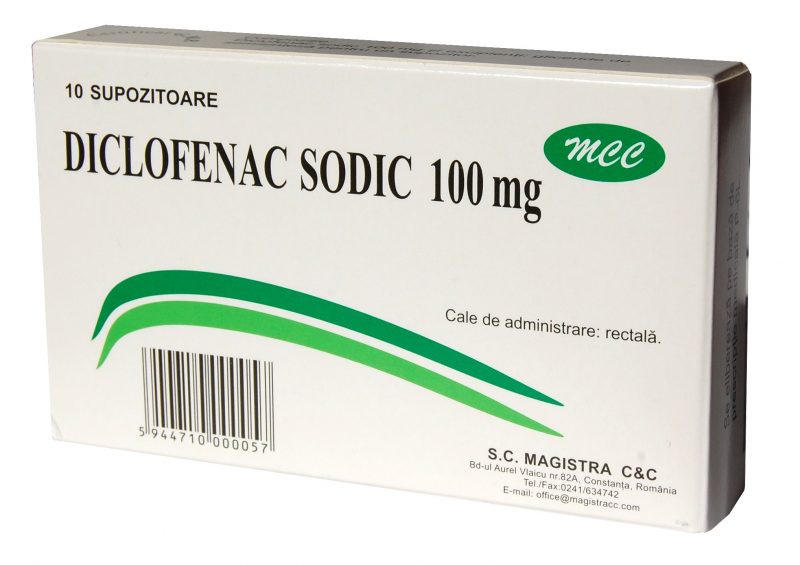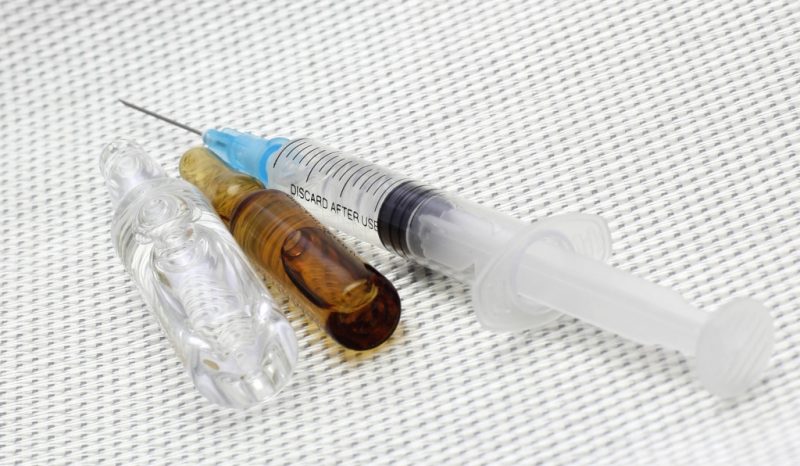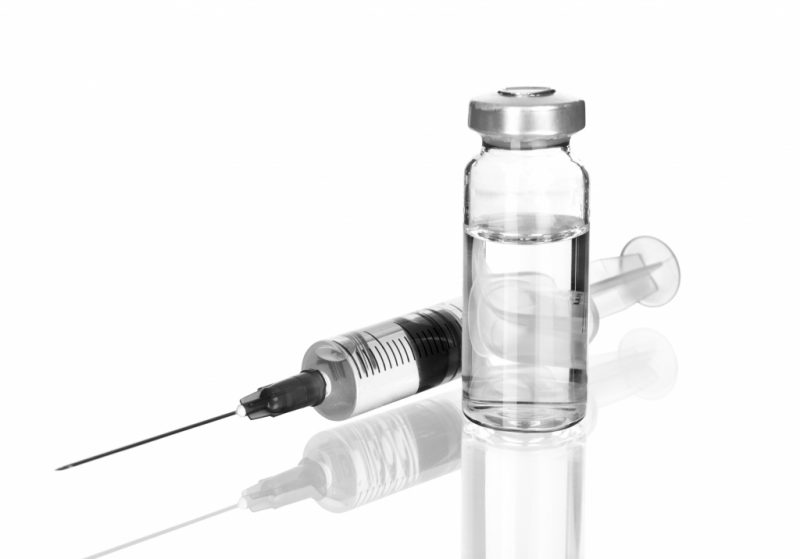Diclofenac is a powerful anti-inflammatory drug that has become the basis for various medicines - tablets, solutions, topical preparations. In the opinion of doctors, Diclofenac injections are considered the most effective, since such a method of delivering the active substance is, of course, the fastest.
Material Content:
- 1 Composition and form of release
- 2 Pharmacological properties and pharmacokinetics
- 3 Why is the drug prescribed?
- 4 Treatment duration
- 5 Instructions for the use of diclofenac injections
- 6 Use during pregnancy and lactation
- 7 Diclofenac Compatibility with Alcohol
- 8 Drug Interactions with Other Drugs
- 9 Contraindications, side effects and overdose
- 10 Diclofenac analogue in injections
Composition and form of release
"Diclofenac" is used to quickly relieve inflammation and get rid of pain. This tool is included in the group of NSAIDs - drugs that do not have hormonal nature in the compounds. This allows him to be regarded as a relatively safe medication.

For injections that can solve the patient’s problem as quickly as possible, a solution is used. It is packed in ampoules of 3 ml of active substance in each. Immediately before use, the glass container is opened, and the medicine is collected in a syringe. Diclofenac in liquid form is used as an intramuscular injection.
The tool works due to the presence in the composition of the same substance - diclofenac, which is non-steroidal in nature. From a chemical point of view, it is a derivative of phenylacetic and para-hydroxybenzoic acid.
Pharmacological properties and pharmacokinetics
Diclofenac begins to work almost immediately after ingestion.The principle of its action is based on the process of blocking the synthesis of cyclooxygenase, an enzyme in the presence of which inflammation proceeds and actively spreads.

In addition, the tool is capable of:
- block the formation of arachidonic acid, which provokes edema in the tissues;
- eliminate stagnant processes;
- protect nerve endings from damage;
- reduce pain sensitivity;
- suppress excessive gluing of platelets in the bloodstream;
- restore the affected areas of tissue.
"Diclofenac" can be considered as a means of complex effects on the body, helping to reduce the intensity of pain, eliminate swelling, redness, and normalize the local temperature in the damaged area of tissues.
The maximum concentration of the active substance with intramuscular administration of the drug can be achieved 20 to 25 minutes after the injection. The tool remains highly active for 3 to 4 hours, and later begins to be excreted from the body. In this case, almost half of the administered amount of the drug is metabolized in the tissues of the liver. The formed metabolic products are less active compared to the starting material. They are excreted in the urine and bile.
Why is the drug prescribed?
"Diclofenac" in the form of a solution for intramuscular administration is a powerful agent with anti-inflammatory and analgesic effect. The list of its application is quite wide.

Diclofenac is prescribed for:
- renal or hepatic colic;
- inflammatory processes in the internal organs;
- degenerative changes in the musculoskeletal system;
- joint pathologies associated with salt deposition;
- autoimmune diseases;
- acute migraine attacks;
- recovery after surgery;
- neuralgia;
- painful menstruation.
It is only important to consider that Diclofenac in any form of release does not affect the cause of the pathology.
This remedy is mainly used to relieve acute symptoms. Usually it serves as one of the links in the chain of complex therapy.
Treatment duration
Diclofenac injections intramuscularly help to eliminate unpleasant symptoms in the shortest possible time, but it is impossible to use this remedy for a long time because of possible negative effects on the liver.

The standard course of drug treatment lasts from 2 to 5 days. Sometimes just one day is enough - the patient receives injections in the morning and in the evening, and already from the second day switches to other forms. A softer effect is possessed by tablets or a local action - ointment.
Instructions for the use of diclofenac injections
The solution for injection is administered intramuscularly. The optimal area is the buttocks. Doctors advise alternating the left and right sides, since the process of administering the drug is accompanied by painful sensations.

The solution is drawn into a syringe just before administration. At the same time, it is recommended to hold the ampoule in the palms for a while so that the drug warms up to room temperature.
The dosage, as a rule, is selected by the doctor individually. With moderate pain or calmly ongoing inflammation, it is enough to administer 75 ml of the drug to the patient at a time. This is one ampoule of remedy. If the pain is extremely strong, then the dose can be increased to 150 ml (2 ampoules once). The effect of the drug usually weakens noticeably after 4 to 5 hours, which may require repeated intramuscular administration.
Use during pregnancy and lactation
Diclofenac, like all NSAIDs, is considered a relatively safe drug with a small list of contraindications, but caution should be exercised during pregnancy.

Injections may be given in the first or second trimesters, provided that the remedy is prescribed by a doctor and is used strictly according to indications.In the third trimester, it is forbidden to use Diclofenac, since the medicine can negatively affect the condition of the fetus.
Doctors explain that the active substance of a drug, due to changes in enzyme activity inside the body, reduces the concentration of prostaglandins, compounds that stimulate the timely onset of labor. With their shortage, childbirth does not begin in the period from 37 to 42 weeks, which is fraught with hypoxia of the fetus.
During lactation, treatment with Diclofenac should be abandoned. If this is not possible, then breastfeeding is temporarily stopped.
Diclofenac Compatibility with Alcohol
According to leading experts in the field of pharmacology, it is better to refuse to take "Diclofenac" in the form of a solution for injection and alcoholic beverages. These compounds have the opposite effect. Alcohol inhibits the central nervous system, while the components of the drug can increase neural activity.

If the patient does not follow the doctor's recommendations and drinks alcohol during therapy, his body will be susceptible to negative effects.
In particular, a joint intake of "Diclofenac" and alcohol is fraught with:
- increased load on the liver;
- hypertension
- heart rhythm disturbance;
- increased side effects.
In addition, it is proved that any alcoholic beverages reduce the effectiveness of NSAIDs, making their use meaningless.
Drug Interactions with Other Drugs
Many diseases require an integrated approach to therapy. In this case, you need to consider how Diclofenac will interact with the rest of the prescribed drugs.

- Concurrent use with potassium-sparing drugs provokes an excess of the mineral in the blood.
- Taking "Diclofenac" in conjunction with other drugs from the NSAID group can provoke the development of undesirable side effects from the digestive system - nausea, vomiting, abdominal pain.
- The activity of "Diclofenac" decreases with the use of any antipyretic drugs based on acetylsalicylic acid.
- With caution, “Diclofenac” in the form of injections is used for diabetes. It increases the likelihood of sudden fluctuations in sugar levels.
- NSAIDs reduce the effectiveness of diuretics.
- Diclofenac increases the negative impact of Cyclosporin on the kidneys and urinary tract.
If the patient is already taking any medications, then the doctor who prescribes Diclofenac must be notified about this. The specialist will provide valuable guidance upon compliance with which it will be possible to minimize the side effects of sharing several medicines at the same time.
Contraindications, side effects and overdose
The main indications for Diclofenac injections are inflammation in the tissues or joints, accompanied by severe pain, but this medication can not be used in all cases.

Doctors give a list of contraindications, in which it is necessary to switch to a similar drug with a more gentle effect or completely abandon NSAIDs.
The list of restrictions includes:
- age less than 18 years;
- final trimester of pregnancy;
- breast-feeding;
- intolerance to components;
- impaired hematopoiesis;
- pathological changes in homeostasis;
- gastric ulcer in the acute stage;
- gastric bleeding.
Long-term use of the drug is effective against pain and inflammation, but can provoke side effects, which include:
- headache;
- dizziness;
- insomnia;
- cramps
- anxiety attacks;
- increased nervousness;
- visual impairment;
- noise in ears;
- arrhythmia;
- heart failure;
- bowel disorders;
- hematuria.
Most often, side effects develop locally. The injection site may swell, swell, harden. Patients with a low threshold of sensitivity often complain of pain in the injection area.In severe cases, if the skin is not thoroughly treated before the injection, infection can be introduced with subsequent suppuration.
With an increase in the duration of treatment, it is possible not only the development of undesirable side effects, but also the appearance of signs of an overdose, which include:
- nausea;
- cramps
- loss of consciousness;
- bleeding;
- pain in the stomach.
When the described clinical picture appears, stop using the medicine. In acute cases, symptomatic treatment is performed. The patient is washed with a stomach, given a sorbent and provide a plentiful drink.
Diclofenac analogue in injections
In some cases, doctors replace Diclofenac injections with similar medicines, which are also non-steroidal in nature. The best option is Ibuprofen.

The chemical in its composition is different, but it ultimately also inhibits the synthesis of prostaglandins and blocks the spread of inflammation. It is believed that Ibuprofen is the drug with the mildest action. It is it that can be used to treat pregnant women and children.
Other analogues include:
- Diclobene
- Diklak
- Ortofen;
- Voltaren.
The final decision on the appointment of any drug is always made by the doctor. The specialist will take into account the condition of the patient and determine whether he needs to be given injections or whether it is possible to dispense with the use of a pill or ointment.












